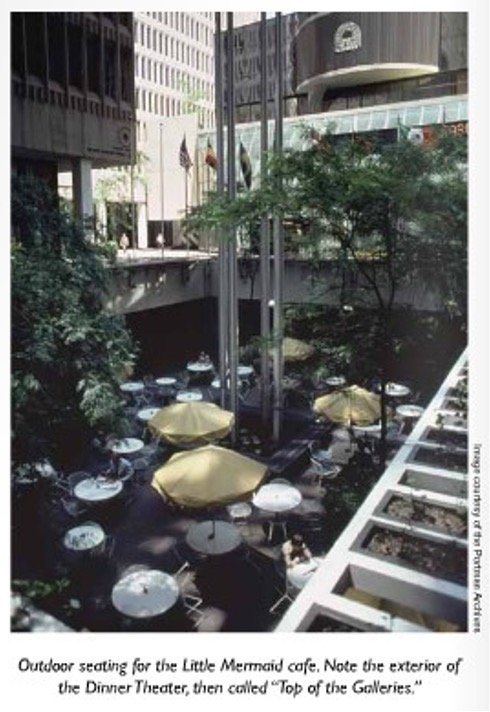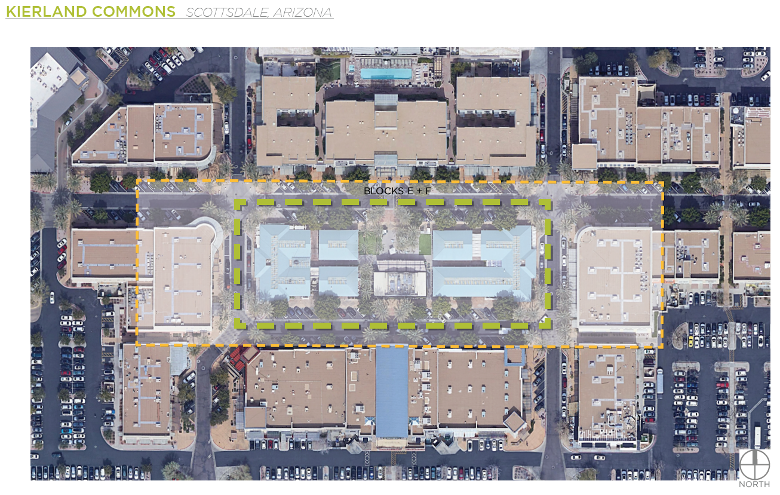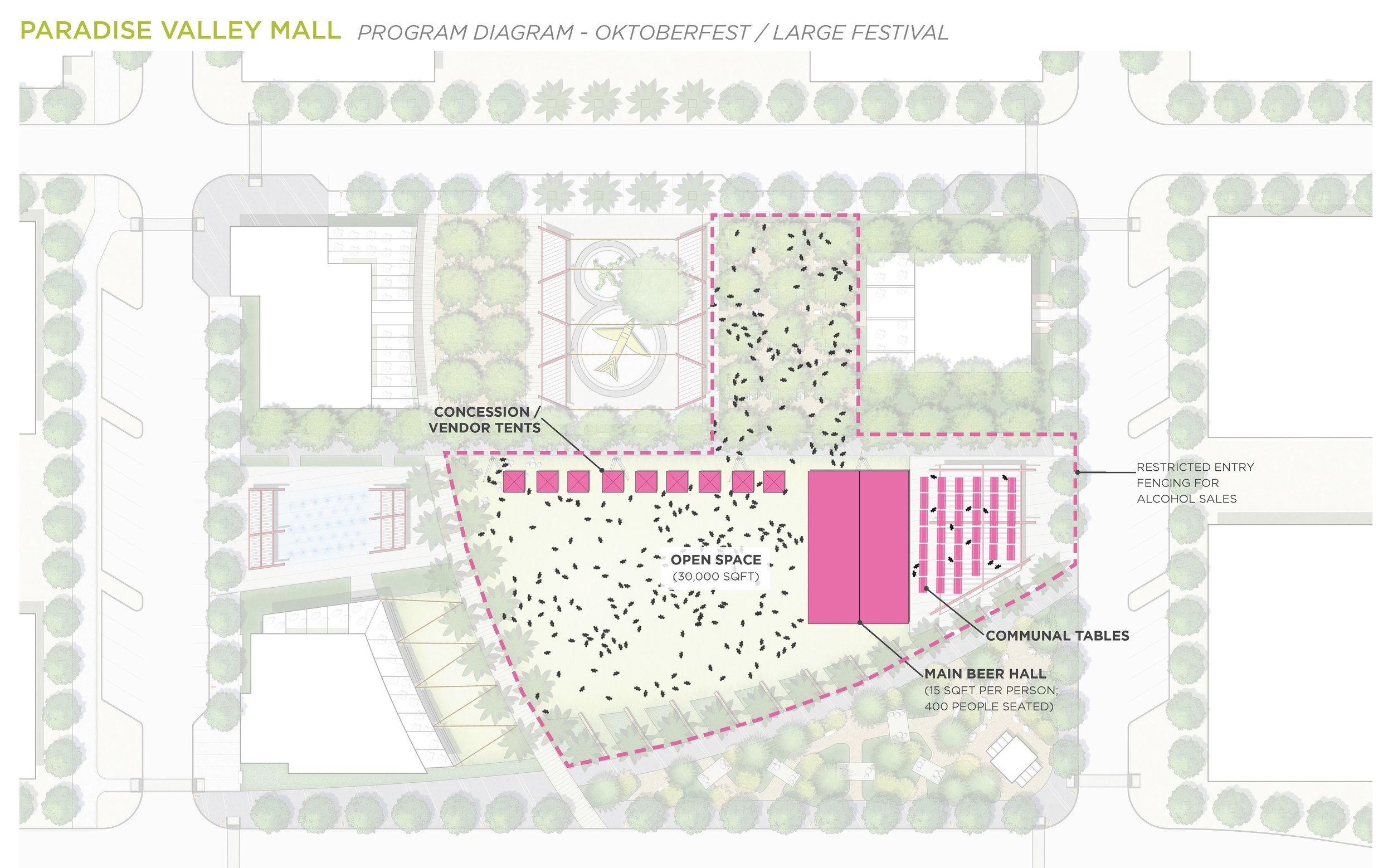The art of placemaking pulls from a variety of components. Precedents and past experiences are two of many elements that help inform this process. Studio Outside principals Chip Impastato and Ellen Denk recently shared their thoughts on the use of precedents and the craft of process.
***The following responses have been edited for clarity and brevity.***
What role do precedents play in your design process?
Ellen: While every project is unique, utilizing client-facing and internal precedents is common. Many clients are keen on using precedents to check their competition and confirm that they provide the right thing for the market. Designers also utilize precedents for elements such as aesthetics, geometries, and the story, which involves a more internal study that the client doesn't necessarily see.
Chip: Precedent designs tend not to play a role for me because every place is different and deserves its own attention. However, I use precedent locations as a learning tool for their usage and performance. Since I tend to work with urban developments, my primary goal is to consider how the space can be used in a positive manner and how people will feel in the space. What I mean is that the design should successfully answer two questions. First, does the design satisfy the primary and possible needs of the space? Second, does the space perform in a manner that people experience enjoyment, comfort, and safety?
Where do you source your precedents, and at what stage do you introduce precedents in your design process?
Ellen: I start with prior work that the team has done, both good and bad examples, such as physically visiting spaces and evaluating their design. It's interesting to talk about what didn't work just as much as what did work. You must be really careful about the "Pinterest-type" search (i.e., just finding the best eye candy). Still, internet images can be helpful to keep a beat on what some of the more cutting-edge projects are, where the profession is going, and what type of things you want to propose that are appropriate for the problem you want to solve.
I introduce precedents at all stages, from considering a project approach to setting up a story and the project’s mission to graphic style to construction detailing. I think it starts with humility about who you are and knowing that you are not the end-all-be-all and someone is always doing something better than you. It's dynamic; who is doing something the best is constantly changing, and you can't quantify that.
Chip: Prior to using precedents, I start with serious communication with the client and other design team members. Likely, there are underlying and previously established goals for the development. Besides the goals, I want to know the stakeholders and potential users of the space. We want to know who they are, their demographic makeup, and their reason for participating in this development. After this, a program is established, and preliminary designs take shape. This is when I begin studying precedents, searching for evidence of successes and failures of similar program elements in comparable developments. Several topics are usually considered, starting with program congruence. Can the design program satisfy the goals in a successful manner? Answering this involves many different elements, such as scale, size, view, exposure, sensory, ease, volume, intensity, and connectivity. For me, success is not a design based on shape or ignorance of the program. It is also not a design in isolation, pretending it's not part of a bigger story. It's not a replication of nature. Nature is nature; it is organic, random, and serendipitous and cannot be copied. Success is providing a design unique to the goals of that place and time.
Is there a specific precedent you visit or process you find yourself following again and again?
Ellen: What inspires my designs is the feeling "you can't go home again." This is a deeply personal thing, and I don't necessarily present this in formal client presentations. This isn't a new concept; many artists have explored this before me. It's about trying to recreate an experience; you're trying to recreate your home; you're trying to reconnect with something bigger than yourself. For me, it was a connection with nature in my childhood and how nature was an immovable object, and I was the one who had to respond, not the other way around. I constantly try to mimic that connection in design, even if it's an urban project—the idea of "nature wins," while architecture is secondary or responsive to a natural system. This could play out as a rain garden being the organizer on the site and the architecture forms responding or bridging to accommodate the 'energy' of that natural system. It could be eroding materials or berms rising around/against a building.
I also enjoy considering the visual weight of geometry. Playful geometries with hierarchy are engaging to me. A dynamic design has a hierarchy of materials and geometries. Two materials don't meet at a corner—you must pick one to be dominant. Consider which one visually has more weight or energy. Something must have dominance, and something is subservient to that form.
(Ellen) This was a quick sketch in collaboration with Studio MLA for Fair Park Community Park. The design team put in the work prior to jumping right into sketching. The pre-work was aligning a story about the community and landscape that resonated. Once that was set, the sketch was actually very quick. Finding common ground and a threshold/front porch lent itself to a clear organizer of the park. The story of the prairie and topography allowed for a natural system to integrate architecture that was responsive to the land.
Chip: Not specifically. My process does not always follow the same order but usually considers similar paths of thought. However, I sometimes revisit (on different occasions) previous precedents to assess their performance over time. The world changes fast, and our activities and desires as humans change because of interests over time, as well as outside and uncontrollable influences. Regarding process, not all goals are relevant to every project, nor are they of consistent importance. Concerning usage, well, stuff happens. These impacts potentially change the core demands of the location, usually falling into one of two categories: intentional and unintentional. Intentional might be converting an old office building into a residential development. Unintentional changes are usually more monumental, like natural disasters, catastrophes, or societal-based issues.



While it may not be a specific precedent, I consistently apply the same style to most of my designs: modernism. As I mentioned previously, I have a fundamental issue with replicating nature, so my designs tend to appear orderly, intentional, and straightforward. I believe in performance and avoid clutter—function over form.
Is there an individual or landscape architect you look to emulate in terms of their use of precedent or process when designing?
Ellen: I have had an amazing team around me my whole career, and by osmosis, you all start to draw from each other. Mike, Andrew, and Tary have all pushed me with key insights on my designs, and they have had more impact than any other outside designer. An artist that I mention a lot is Georgia O'Keeffe and past watercolor professor Rich Forsyth. I love the abstractness and seeming loss of control of their work, yet there is composition and hierarchy to their designs, knowing what doesn't need a lot of detail versus knowing the details to develop. A lot of my early work was very fussy with way too many 'dipsy-doodles.' There was no elegance to the form. A casual observer walking through my design would never have understood the "why." Any kind of connecting thread was too small or fussy to understand. I've worked to refine my process to think about abstractness and what to include. You don't need every little detail— folks can bridge the gap and infer the bigger story if you don't distract them with too much 'noise.'
(Ellen) Using a constrained color composition, the ideas of hierarchy and symmetry or lack of symmetry, and the visual weight of how something feels are important components in landscape architecture.
Chip: Several people have influenced my work as a landscape architect. Bill Millsap was a major influencer, likely because of how long we worked together. Our design styles have always been different, but Bill taught me to learn about the roots of a place and the fundamental differences in people and cultures. When traveling, he always took an extra day to get to know the place and the people. This learning visit is vital in understanding Hofstede's cultural dimensions and local geographies. Assuming that we "know" is the first step towards failure. Another was John Wong of SWA. Our firms were paired up for the Tarrant County Community College in Fort Worth. During work sessions, John was always standing, being interactive, and drawing on plans as the discussions happened in real time. The visual and verbal aspects led to real interaction with the participants, and we also tested/documented the design as we went along. This method starkly contrasts a more normal meeting that only uses verbal discussion. Finally, I would say some sort of hypothetical person that combined Jony Ive and Mies van der Rohe. Less is more, strip out the unnecessary, build it to last, make it perform, and reduce waste.
Describe a unique, outside-the-box application of a precedent or your process.
Ellen: I don't get to do it every time, but I love to have an artistic outlet while mulling over a project design. Watercolor is a dynamic medium that almost forces me to become more abstract, as it is not static or controlled. I like to joke that watercolor is a philosophy for life because you can't control it, and the more you do, the worse it gets.
(Ellen) A parallel track to my process is watercolor, allowing abstract forms and flows of the medium, ‘letting go’ a little bit because you can't control the medium.
Chip: Often, clients are not designers. We must remember they may not understand how we use language and will likely have trouble understanding different visual tools (drawings). More so, they have difficulty applying their recollection or vision of a place to the current site. It's important that we ask them questions in different ways to ensure we are hearing what they are trying to say. They tend to use recall of a place, a time, or an experience while trying to express themselves. Instead of understanding the fundamental differences between place and program, they attempt to replicate a feeling without considering the physical. I have found that often our minds play tricks on us, and it's not so much that you did or didn't enjoy the experience, but that there are fundamental differences between places and that it's impossible to snap your fingers and provide replication of experience. I see this often occur relating to scale.
A great example may be when a client says, “I want it to be like the big plazas and romantic streets in Europe.” Well, we're not in Europe, and it's not 1850. This is an example of changes in time. In this case, we may be in 2024 in the United States. Recalling the romantic vision and feeling experiences in historical places are often incongruent with the necessities of today. Consider things like building codes, zoning laws, fire lanes, building separation, and population intensity. We can appreciate and understand what they're saying and their desired experience, but we also have a unique skill set and expertise to understand the underlying differences. We can deploy many tools to overcome this situation, but I find using scale diagrams and empirical evidence the most successful. These two tools are almost universal for educational purposes and allow us to communicate in a language that all stakeholders can understand. These tools enable us to get creative, bridge the experiential gap, and bring them to an understanding that you can't just replicate that beautiful feeling you had at this place here, no matter how much money or whatever you throw at it. Then, we can get back to creative problem-solving.







What advice do you have for landscape architects just entering the field regarding the use of precedents or processes?
Ellen: Learn by doing, but don't get caught up in it. There's always somebody doing outstanding work, but don't get sucked into that splashy image on a website or that splashy image on Pinterest because there's a whole lot more behind that image than what you are seeing. I've also learned not to measure myself against some lucky moment of discovery. You must go through some 'churn' to get to where you are. Keep a humble spirit about it.
Chip: Ask questions, check your ego, release fear, and embrace critique as a gift. When working with others, ask them what they see and what process they use. Verbally express your design thoughts out loud while drawing (it seems silly, but it's scientifically proven). Listen to that gut feeling and question what you're seeing. Dig a little bit deeper. Test the idea against the initial goal. Never stop intentionally and unintentionally learning. It will make you better. Oh, and take time off; the best know how to keep themselves fresh and recharged.




